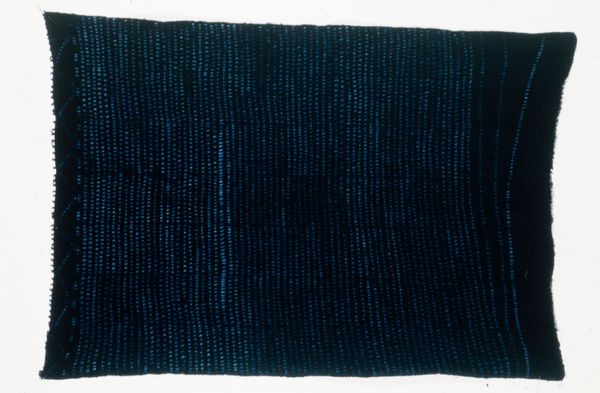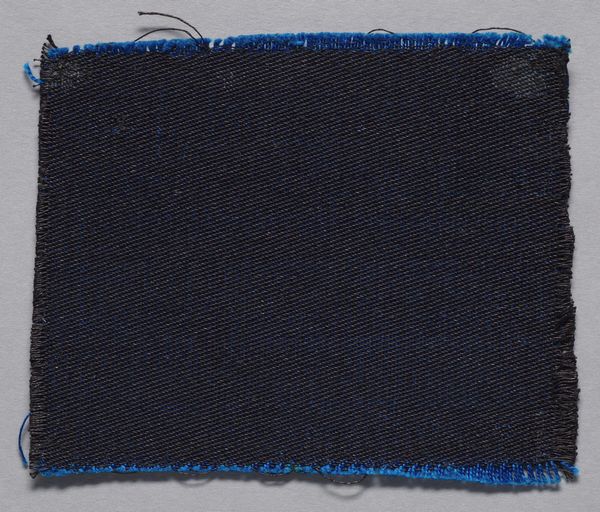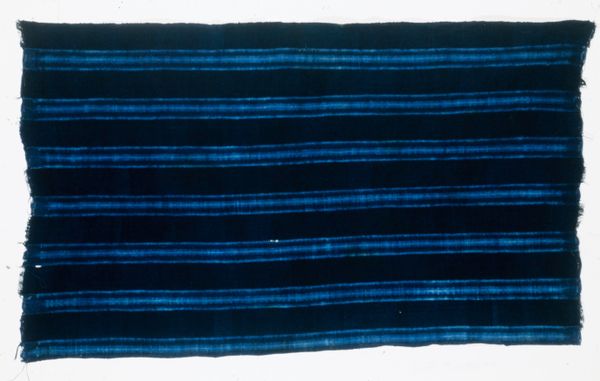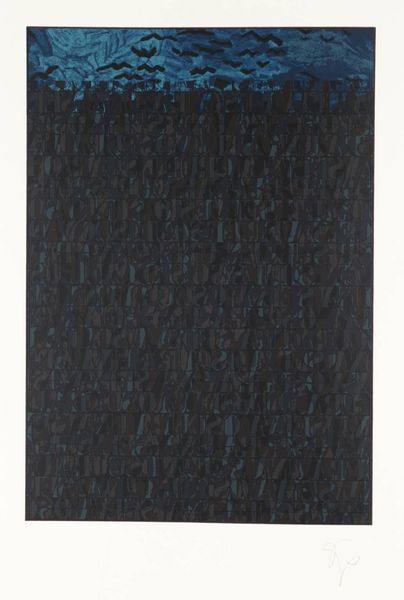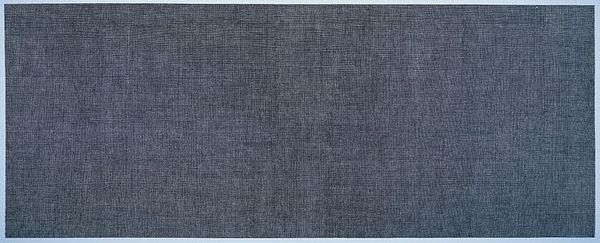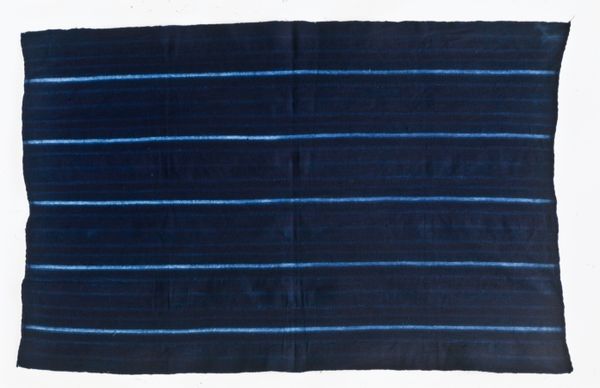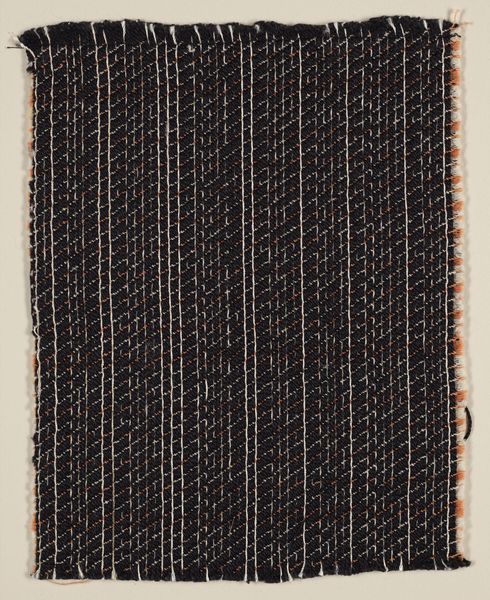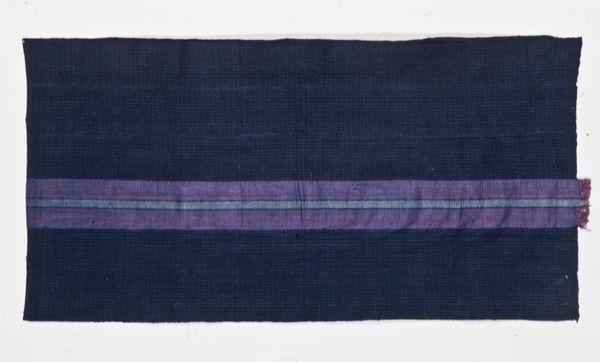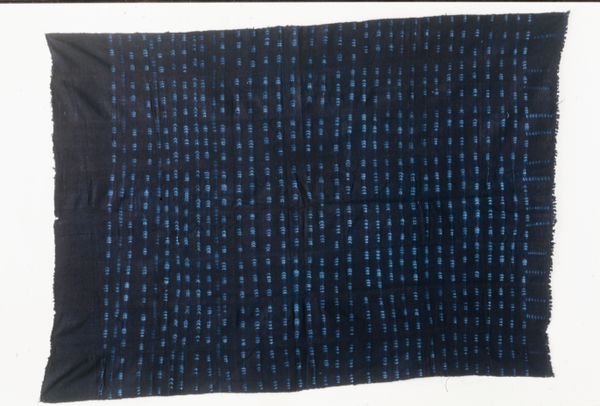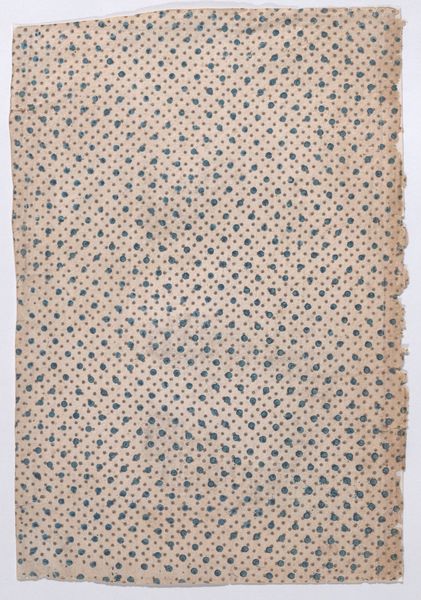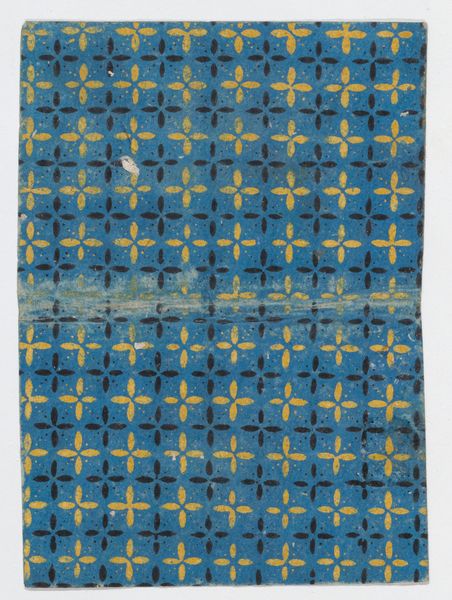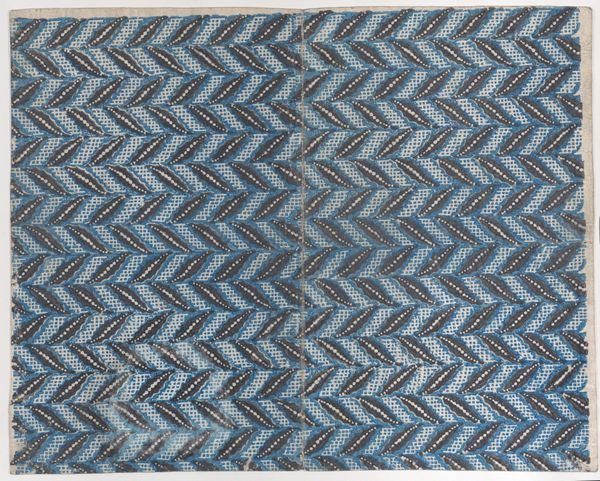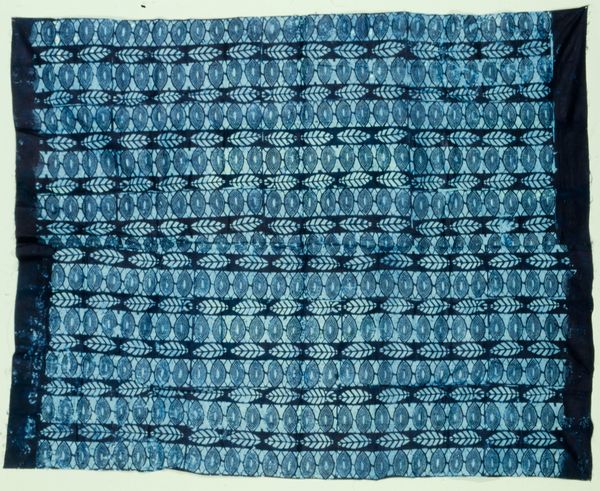
weaving, textile
#
weaving
#
textile
#
line
Dimensions: 60.25 x 44.5 in. (153.0 x 113.0 cm)
Copyright: Public Domain
Curator: Here we have “Woman’s Skirt Length,” a cotton textile design attributed to Aisseta Napo, created around the 20th century. You can find it here at the Minneapolis Institute of Art. What strikes you about it? Editor: The indigo is just hypnotic. There's something about the way these very thin vertical lines seem to vibrate, it gives this almost minimalist geometric artwork an overwhelming sense of energy. Curator: Indeed! The artist works in cotton, arranging those lines almost like musical notes on a staff. Given its designation, we can assume this length of dyed cotton was specifically designed for the making of a skirt. Editor: Exactly. You start thinking about the labour. Hand-dyeing this much fabric indigo is no small feat, thinking of the process, the repetitive motion needed for the meticulous dyeing process is hard to ignore. This brings up ideas about production versus unique creative expression. Was there any mechanization? How are works like these classified and valued in the textile trade? Curator: The intersection of geometric patterning, specifically vertical lines, and Pattern & Decoration connects it to social movements and shifts in cultural attitudes during the latter half of the century. Looking at the design, it might be linked with conversations around feminism and the rejection of rigid artistic hierarchies that dominated artistic circles. Editor: It certainly prompts consideration. And not just from a maker's perspective, but also from a cultural perspective – who is wearing this skirt, in what settings, and what meanings are they ascribing to the finished item. Curator: It becomes a very human document. Art as wearable material culture can then become part of everyday practice that blurs the divide between decoration, labor, and the broader context of fashion. Editor: Yes, this makes me question assumptions. By placing "craft" in the hallowed halls of an art museum, are we acknowledging its deep connection with the people involved with the making of it, or sanitizing its real cultural functions and value for easier art world consumption? Curator: It highlights art's social functions. Thanks to its history and craftwork, textiles help us ask significant questions. Editor: Agreed. I now see this artwork as the intersection of materials, people, and broad cultural narratives that deserve contemplation and study.
Comments
No comments
Be the first to comment and join the conversation on the ultimate creative platform.
